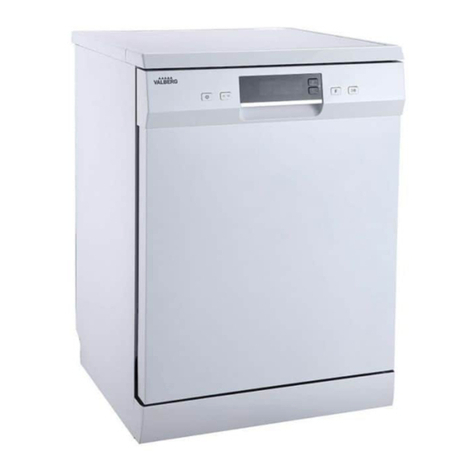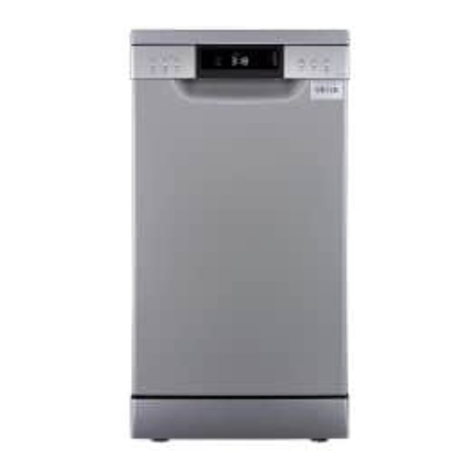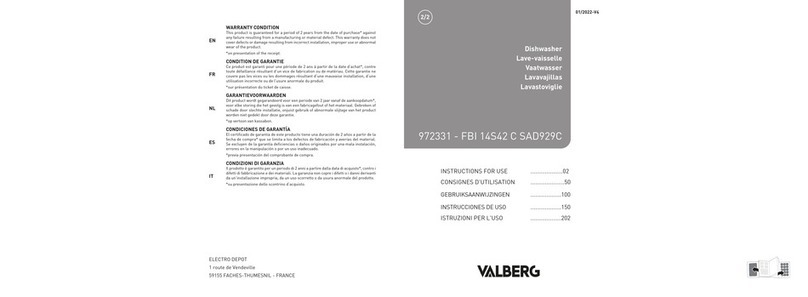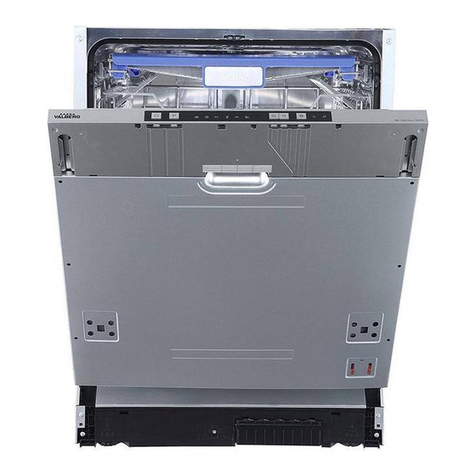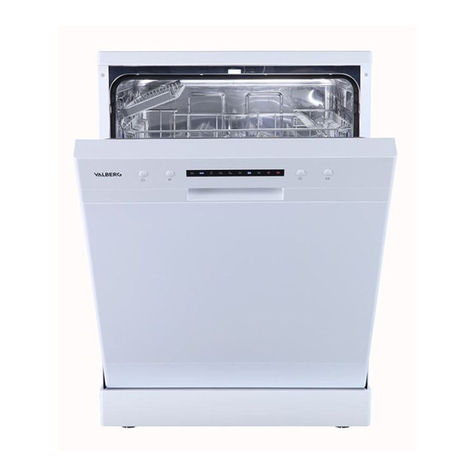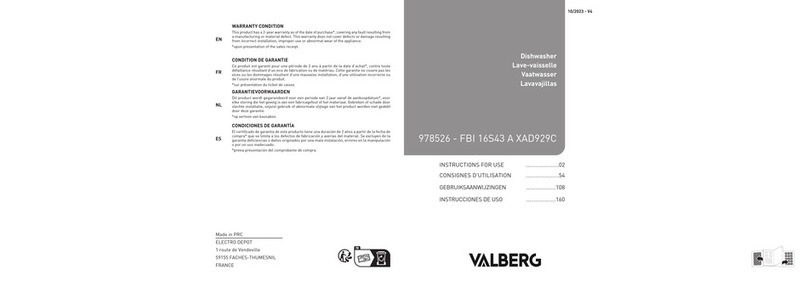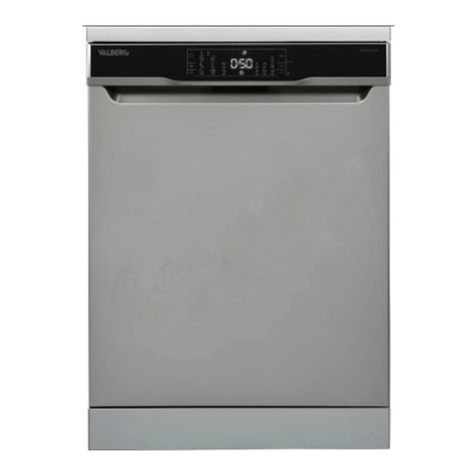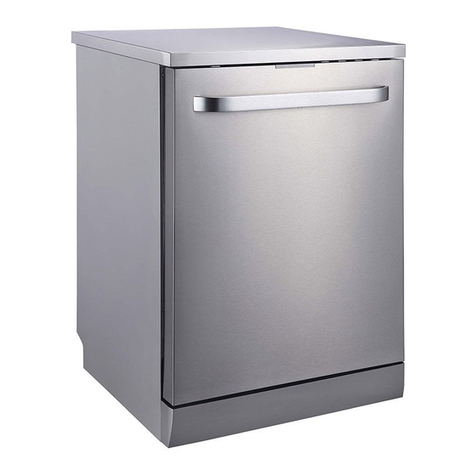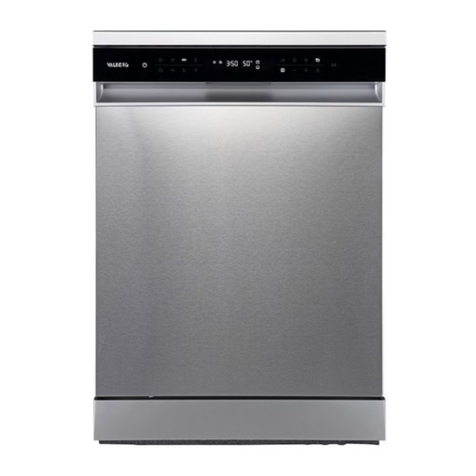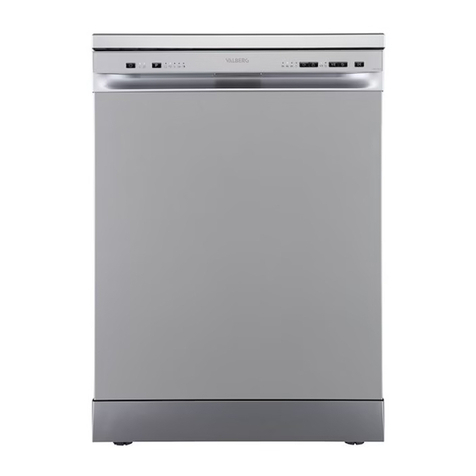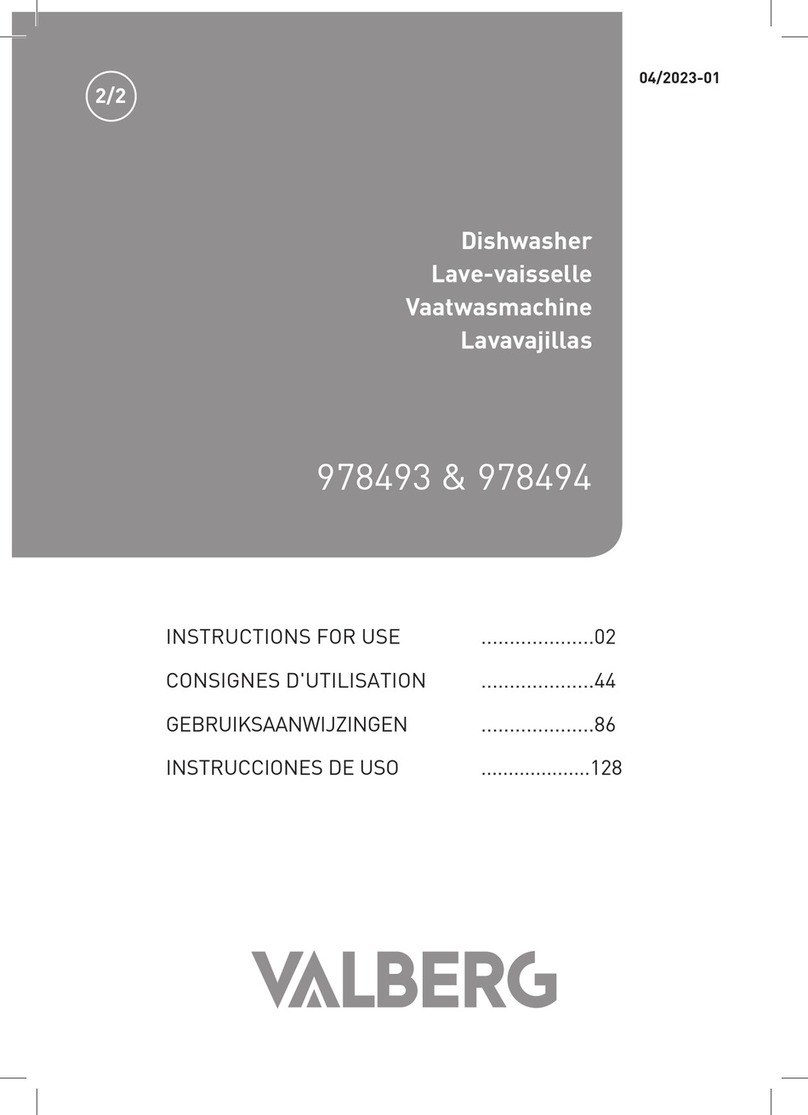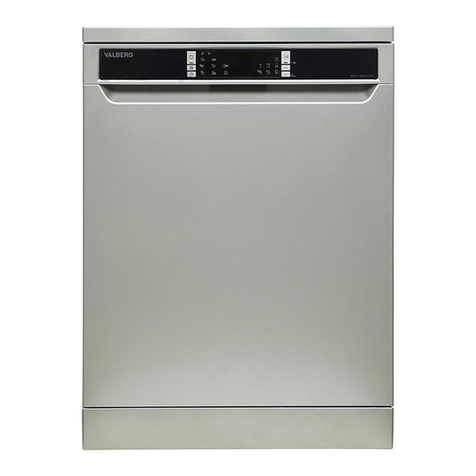
16 17
EN EN
Using the appliance Using the appliance
B B
Display
5Program
indicator
Intensive
For heaviest soiled crockery, and normally soiled pots,
pans, dishes etc. With dried-on food.
Universal
For normally soiled loads, such as pots, plates,
glasses and lightly soiled pans.
ECO
This is standard program, it is suitable to clean
normally soiled tableware and it is the most efficient
program in terms of its combined energy and water
consumption for that type of tableware.
Glass
For lightly soiled crockery and glass.
90 min
For normally soiled loads that need quick wash.
Rapid
A shorter wash for lightly soiled loads that do not
need drying.
6Screen To show the reminding time, delay time, error code etc.
7Warning
indicator
Rinse Aid
If the “ ” indicator is lit, it means the dishwasher is
low on dishwasher rinse aid and requires a refill.
Salt
If the “ ” indicator is lit, it means the dishwasher is
low on dishwasher salt and needs to be refilled.
Water Faucet
If the “ ” indicator is lit, it means the water faucet
closed.
Water softener
• The water softener must be set manually, using the water hardness dial.
• The water softener is designed to remove minerals and salts from the water, which would
have a detrimental or adverse effect on the operation of the appliance.
• The more minerals there are, the harder your water is.
• The softener should be adjusted according to the hardness of the water in your area.
• Your local Water Authority can advise you on the hardness of the water in your area.
Adjusting salt consumption
• The dishwasher is designed to allow for adjustment in the amount of salt consumed based
on the hardness of the water used. This is intended to optimise and customise the level of
salt consumption.
• Please follow the steps below for adjustment in salt consumption.
1. Close the door, switch on the appliance;
2. Within 60 seconds after the appliance was switched on, press the Programme button for
more than 5 seconds to start the water softener setting mode;
3. Press the Program button again to select the proper setting according to your local
environment, the setting will change in the following sequence:
H1 -> H2 -> H3 -> H4 -> H5 -> H6.
4. Without any operation in five seconds or press the Power button to end the setting mode,
the setting is memorized by the programme.
WATER HARDNESS
Setting on the water
softener
Digital display
stalls
Regeneration
occurs every
X program
sequence 3)
°dH 1) Mmol/l 2)
0 - 5 0 - 0,9 1 H1 No regeneration
6 - 11 1,0 - 2,0 2 H2 10
12 - 17 2,1 - 3,0 3 H3 5
18 - 22 3,1 - 4,0 4 * H4 3
23 - 34 4,1 - 6,1 5 H5 2
35 - 45 6,2 - 8,0 6 H6 1
1) German degree of measurement for the water hardness
2) millimol, internationel unit for water hardness
3) Every cycle with a regeneration operation consumes additional 2.0 litres of water, the
energy consumption increases by 0.02 kWh and the program extents by 4 minutes.
* factory setting
Eco
90’

